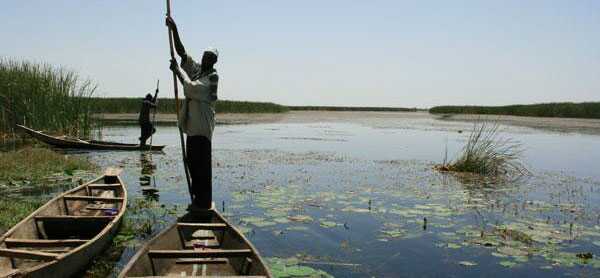The Nigerian Conservation Foundation (NCF) says it has spearheaded the conduct of Winter Bird Census at Hadejia-Nguru Wetlands (HNW), located in Jigawa and Yobe states.

Mr Oladapo Soneye, NCF’s Head of Communication, said in a statement in on Tuesday, February 25, 2020 that the wetlands complex, the first of its kind in Nigeria, was of immense interest to bird-watchers.
According to him, the HNW complex is of international significance to Palaearctic and Afro tropical migratory water birds, with counts of about 423,166 birds from 68 species.
Soneye, however, said the bird populations in the wetlands, usually fluctuated at each seasonal count.
He said the wetlands had long been known as a centre of fish production.
“However, upstream hydrological developments driven by irrigation projects threatened to degrade this important resource.
“Studies of flood plain fisheries have shown that fish production is closely related to flood extent.
“The existing and planned dams upstream of the HNW are likely to have a serious impact on fisheries.
“The ornithological importance of the HNW, at both national and international levels, is well known,’’ Soneye said.
Soneye said current efforts at conserving the avifauna of the wetlands started with the establishment of the HNW Conservation Project in 1987.
He said the project was established as a joint international initiative to promote sustainable use of the hydro ecosystem in the semi-arid zone of north-eastern Nigeria.
“Since its inception, the project which comes in phases has goals of maintaining the natural resources and function of the wetlands.
“Bird monitoring and the annual dry season (northern winter) water-birds surveys remain one of the most publicised bird conservation efforts of the conservation project.’’
He said that due to the vital role of water in maintaining the ecological health of wetlands, the project evolved a new strategy of establishing site support groups in all the project sites.
According to him, these local communities are engaged in communal Typha clearance activities and regular meetings of NCF Promoter’s Committee and the wetlands’ water stakeholders.
The typha grass, locally known as “kachalla”, is a stubborn weed that blocks waterways and harbours dangerous reptiles.
“These activities and meetings are held to resolve periodic water use conflicts, channel blockage, water- shortage/distribution and other environmental problems.’’
Soneye said that the Federal Ministry of Environment had attempted to use a weed harvester machine to address the typha invasion of the wetlands.
“This needs to be sustained for better results,’’ he said.
Soneye recalled that the presentation of one Dr Sulaiman Inuwa, a lecturer with the Federal University of Dutse, at a census forum.
He quoted Inuwa as saying that uncontrolled hunting of birds and habitat loss remained pressing problems throughout the wetlands.
“To address this, therefore, the conservation project has made efforts to curb these problems through the ongoing bird species conservation and tree planting/habitat regeneration programme,’’ Inuwa was quoted as saying.
According to him, the project is also sensitising students and the local communities through awareness campaigns and harnessing the efforts of concerned relevant local CSOs and government institutions.
Mr Harry Hanson, NCF Project Officer, who led the team, said “the conservation project is still consulting relevant stakeholders regarding sustainable control of crop damage by avian pests in the wetlands.’’
Participants at the winter bird census include a representative from The Federal University of Dutse, Jigawa Ministry of Environment, Chad Basin National Park (Wetlands Sector) and Nguru Local Government, among others.
